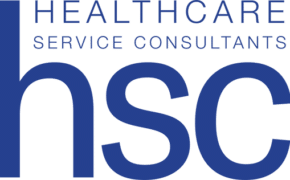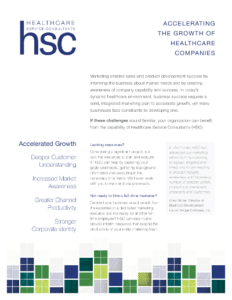
Does it surprise you that about 75% of U.S.-based healthcare IT startups fail? That’s a shocking statistic1.
Many blame lack of funding and complex and expensive regulatory pathways. In reality, the number-one reason for failure is misreading market demand. Also, an inability to generate new business2.
It should come as no surprise, then, that a well-thought-out commercialization strategy is key to the success for an early healthcare IT company. What is a commercialization strategy, exactly? What’s involved, and how can you get started?
In this blog, we explore the core components of a successful healthcare IT commercialization strategy. We’ll also provide a checklist to help you assess and improve your readiness for product launch.
Step 1: Set the Stage
Before you launch a healthcare IT product, many pre-commercial activities need to occur. This will help to prepare your organization, and the market, for your new product. These activities center around developing the “proof points” necessary to establish credibility and interest across your target audiences. Activities include:
- Establishing pilot sites. Early adopters of your products allow you to gather real case examples and proof points to support your claims. Pilots go beyond clinical trials or validation projects. They exist in live clinical settings that can prove tangible ROI.
- Understanding the sales cycle. In healthcare IT, sales cycles are often long and complex. It’s important to understand who the decision makers and influencers are. Also, allocation of how and when of budget allocation. And, time horizon to revenue. All should occur before you start selling.
- Identifying who you need to support sales. Your sales team is best equipped to close deals. Yet, healthcare IT often requires a team of experts to support the sales team. They can answer complex clinical or technical questions related to the product’s deployment and use. Identifying and allocating these resources takes careful planning.
- Implementation and customer support. This is where theory and practice meet. Ensuring a smooth and timely implementation that results in a delighted customer is critical. Yet, it’s often an underappreciated step in commercialization success. Developers typically do not have the people and workflow skills to ensure successful implementations.
It is important to remember that each of these activities is a complex project unto themselves. You need to plan well in advance of commercialization to be effective.
Step 2: Identify How Your Healthcare IT Product Will Enter the Market
Your pre-commercial activities are under control. The next step to think about is how your product or service is best sold. For companies with complex or customized products, a direct sales strategy might be best. It allows you to have complete control over your marketing messages and sales cycles. This also helps you build closer relationships with your customers and collect direct feedback.
Yet, it requires you to establish your own sales pipeline. Unfortunately, this can be a significant challenge for new healthcare IT market entrants.
Conversely, a channel partnership strategy can be beneficial. For instance, among companies offering solutions that complement and augment solutions that already exist in the market. Channel partners can help you gain market exposure and added credibility. But, they may cut into revenue and can leave you beholden to outside sales teams.
People often think channel sales is easy, but it takes intentional thought and effort. To be successful, you need to provide partner training. They need to understand how to position your product in the context of their own solution. Also, they need to understand how to reduce any dissonance that might exist between their own sales objectives and yours.
Step 3: Set Realistic Sales Targets
Sales projections are an important component of a commercialization strategy. These numbers help to inform business operations and growth. They’re also very important to investors. Investors will be looking for this information to justify investment dollars and expect their potential time to ROI.
Many companies fall into the trap of looking at “broad strokes” market reports. These reports estimate total market size. But, they don’t consider the market dynamics specific to your product or the capabilities of your team to sell and support your product at scale.
Instead, refine secondary market data according to your relevant market segments and competitive landscape. Primary research among your target audience can help to further refine and focus your learnings. This ensures you make more accurate and realistic projections.
Step 4: Establish a Product Marketing and Demand Generation Program
What happens parallel to defining your sales strategy? It is important to establish a product marketing program that leverages your early customer success. This will generate awareness of the problems your solutions solve, and the value of solving them. Such positioning is necessary to generate demand and create alternative market pathways should early commercialization strategies fail.
Even if you have…
- customers lined up
- plans to convert pilot sites into early revenue
- hopes your pilot customers will tell their friends
…it’s still important to maintain a strong marketing program. This ensures that should these opportunities fall through, you’re not starting from ground zero to try and find new leads and customers.
Another important consideration for healthcare IT solutions involves those that need a 510(k). What marketing claims can you make? What claims do you want to be able to make while you are waiting for official clearance? You need to plan in advance what use cases and benefits you will promote to be sure you’re not making claims that do not yet have FDA approval.
Tying It All Together
A well-planned commercialization strategy can mean the difference between success and failure for an early healthcare IT company. These activities should start well before the planned launch date. This affords enough time to gather proof points, establish a viable sales strategy and forecast, and generate market awareness and demand.
Is your company getting ready to launch a new healthcare IT product to market? Do you need help kick-starting your commercialization strategy? Our healthcare IT product marketing experts have crafted successful commercialization strategies for a variety of digital health and medtech start-ups. Contact us to learn how we can help your organization.
1 https://tti-research.com/2021/07/13/medtech-startup-success/
2 https://www.embroker.com/blog/startup-statistics/




